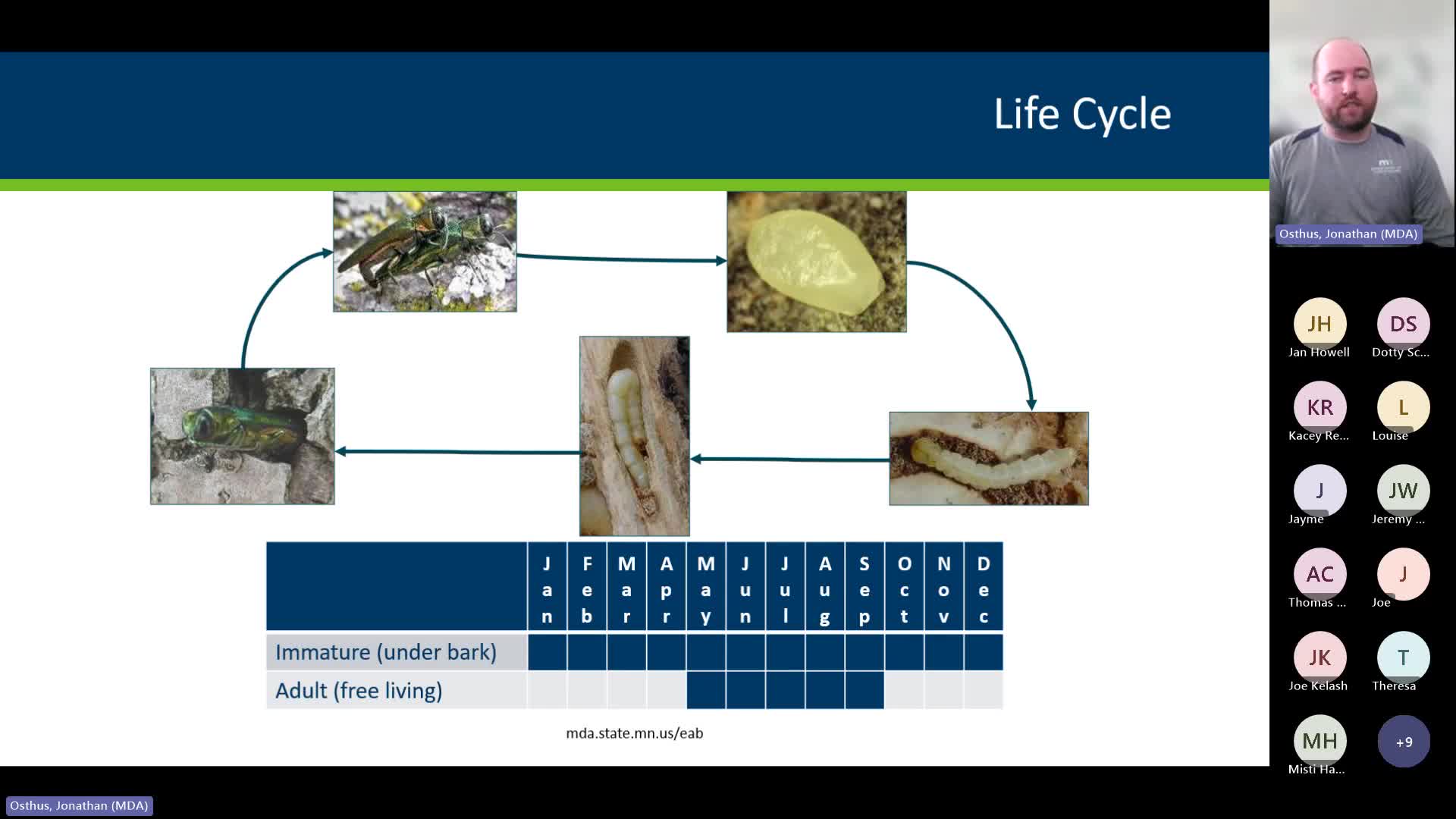Minnesota Expert Explains Emerald Ash Borer Life Cycle and Tree Damage
March 08, 2024 | Agriculture, Department of , Agencies, Boards, & Commissions, Executive, Minnesota

This article was created by AI summarizing key points discussed. AI makes mistakes, so for full details and context, please refer to the video of the full meeting. Please report any errors so we can fix them. Report an error »

Residents of Pine and Renville Counties are facing a growing threat to their ash trees as the Emerald Ash Borer (EAB) continues to spread across Minnesota. During a recent informational meeting hosted by the Minnesota Department of Agriculture, experts discussed the life cycle of this invasive beetle and its devastating impact on local forests.
The EAB has a unique life cycle that can last either one or two years. For instance, an egg laid in 2023 may only partially develop before going dormant for the winter. It will then complete its growth in the following spring and summer, eventually emerging as an adult beetle in 2025. This means that at any time of year, immature larvae can be hidden beneath the bark of ash trees, making it crucial for residents to be cautious about transporting firewood, which can unknowingly carry these pests.
The damage caused by the EAB is primarily due to its larvae, which feed on the cambium layer of ash trees. While trees can tolerate some insect activity, a significant infestation can lead to tree mortality. The beetles tend to start their feeding at the top of the tree, gradually working their way down. This feeding pattern allows them to maximize their reproduction while slowly weakening the tree.
The implications of this pest are serious for local communities, as ash trees are a vital part of the ecosystem and urban landscapes. The meeting emphasized the importance of awareness and proactive measures to manage and mitigate the spread of the Emerald Ash Borer. Residents are encouraged to monitor their trees and report any signs of infestation to local authorities.
As the threat of the EAB looms, community members are urged to stay informed and take action to protect their trees and the environment. The ongoing discussions and initiatives surrounding this issue highlight the need for collective efforts to safeguard Minnesota's natural resources.
The EAB has a unique life cycle that can last either one or two years. For instance, an egg laid in 2023 may only partially develop before going dormant for the winter. It will then complete its growth in the following spring and summer, eventually emerging as an adult beetle in 2025. This means that at any time of year, immature larvae can be hidden beneath the bark of ash trees, making it crucial for residents to be cautious about transporting firewood, which can unknowingly carry these pests.
The damage caused by the EAB is primarily due to its larvae, which feed on the cambium layer of ash trees. While trees can tolerate some insect activity, a significant infestation can lead to tree mortality. The beetles tend to start their feeding at the top of the tree, gradually working their way down. This feeding pattern allows them to maximize their reproduction while slowly weakening the tree.
The implications of this pest are serious for local communities, as ash trees are a vital part of the ecosystem and urban landscapes. The meeting emphasized the importance of awareness and proactive measures to manage and mitigate the spread of the Emerald Ash Borer. Residents are encouraged to monitor their trees and report any signs of infestation to local authorities.
As the threat of the EAB looms, community members are urged to stay informed and take action to protect their trees and the environment. The ongoing discussions and initiatives surrounding this issue highlight the need for collective efforts to safeguard Minnesota's natural resources.
View full meeting
This article is based on a recent meeting—watch the full video and explore the complete transcript for deeper insights into the discussion.
View full meeting
